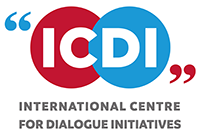The Russo-Ukrainian conflict has given rise to a variety of scenarios aimed at ending the war, ranging from a total military solution to more pragmatic political approaches. Among the most notable proposals is that of Donald Trump, who implicitly calls for a partial surrender by Volodymyr Zelensky, beginning with the recognition of Russian sovereignty over the territories occupied since 2014. However, this idea directly contradicts the will of the Ukrainian people: more than 80% of citizens reject any territorial concessions, which suggests a real risk of internal uprising in the event of a renunciation, as was the case after the annexation of Crimea.
Ukraine continues to demand a complete withdrawal
In contrast, Zelensky and the Europeans are calling for a complete withdrawal of Russian forces, accompanied by maritime, air, land, and cyber security guarantees. But given the current inability to impose such an outcome on the ground, a more realistic intermediate scenario is beginning to emerge. Inspired by the 1953 Korean model, this scenario is based on a freeze in the conflict, without a formal peace treaty, and maintaining current lines. This would allow Ukraine to avoid a military and human hemorrhage, without having to officially acknowledge the loss of territory. Kyiv would continue to claim these regions as occupied or disputed.
On the Russian side, Vladimir Putin could see this as a strategic opportunity: to declare victory against the West without having to sign any agreement. The seized territories would either be constitutionally incorporated into the Federation, as in Crimea, or transformed into satellite republics, like Abkhazia and Ossetia in Georgia. Moscow would maintain its troops there, using these areas as permanent leverage against Ukraine, while strengthening its international status as a power that has successfully defied NATO.
A scenario that could weaken Ukraine while protecting its sovereignty
This scenario, while weakening Ukraine, does not make it disappear. It preserves its existence as an independent state and leaves the door open to continued European economic and military support, within the framework of security guarantees currently being negotiated. This support, however, remains weakened by a deep strategic fracture within Europe , where Eastern European countries, haunted by the specter of Russia, are pushing for confrontation, while some governments openly display a pro-Russian stance. In the West, several capitals are worried about their long-term security, especially after the United States, under Donald Trump, has shown that it can disengage unilaterally.
This exclusion of Europe by the United States has revealed the continent’s strategic vulnerability . Despite its economic power, the European Union struggles to speak with one voice and ensure its own security. Dependence on the American umbrella is now proving to be a weakness, and the Russo-Ukrainian conflict serves as a revealer of this fragility.
“Intermediary” states could play a mediating role in ending the conflict.
At the same time, the United States, actively involved in the conflict, cannot claim to play the role of neutral mediator . This situation would logically have required the intervention of the United Nations as a legitimate arbiter. However, their silence and marginalization in the process reveal the inability of current international institutions to manage major conflicts. This institutional void is a worrying reminder of the failure of the League of Nations in the interwar period , which, lacking legitimacy and resources, was unable to prevent the rise of totalitarianism or the outbreak of the Second World War.
In this geopolitical reshuffle, intermediate powers such as Turkey, India, and the Gulf countries are beginning to occupy a more visible place. Their approaches are based less on principles than on the search for tactical balances and economic interests.
As for China , it is observing events with a keen strategic eye. It wants neither a Western victory nor an overly powerful Russia, but rather a prolonged stalemate that will allow its rivals to be exhausted. Once the conflict is frozen, Beijing could then invest in Russian reconstruction, while pursuing its own global agenda, particularly in Asia, with Taiwan in its sights.
Finally, it should not be ruled out that Moscow will opt for a prolonged war of attrition, particularly after its resumption of initiatives in the Kursk region. The Kremlin, true to its doctrine, considers the time factor to be a strategic weapon in its own right, equivalent to missiles and nuclear deterrence.
In short, the world seems to be entering a phase of systemic instability , characterized by the erosion of international law, the multiplication of frozen conflicts, and the end of multilateralism as known after 1945. A climate that is not unlike that of the 1930s.
Said Salmi is a former professor of geopolitics at the University of Franche Comté. He is also a research journalist and documentary film producer at Noon Films, a British production company.




